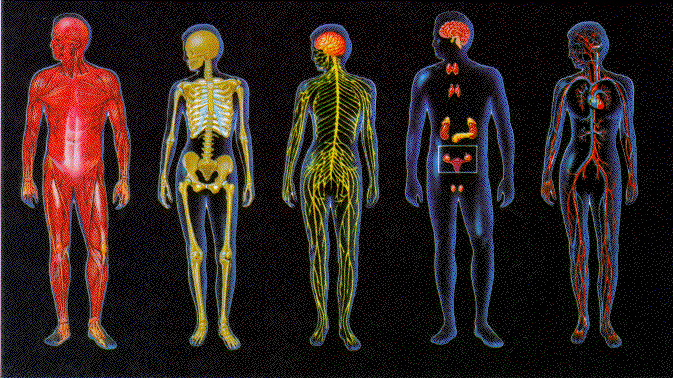- Symmetry meant whether there was a pattern to a body in which two sides are mirror images (bilateral) or you could rotate the body and find a position that lined up (radial).
- Cephalization was whether there was a brain, a group of nerve cells called a ganglion, or no brain-like structure.
- The digestive systems were complete if the animal's food went in one end and came out the other, and incomplete if the waste came out the same opening the food went in.
- Jointed appendages are limbs like arms or legs that have joints.
- Vertebrae are bones that line the nerve cord or spinal cord.
 |
| What vertebrate group did we look at that isn't on this chart? |
We made a chart about the animals we dissected and these five concepts:
It was really neat to see how much we've learned, and how many animals we've already studied! We also reviewed the five kingdoms: Monera (bacteria), Fungi, Plantae (plants), Protista, and Animalia (animals). The kingdoms are subcategorized into phyla (singular is phylum). Here is the phylum for each animal we studied in the fall:
- sponge: Porifera
- hydra: Cnidaria
- planaria: Platyhelminthes
- mussel: Mollusca
- earthworm: Annelida
- crayfish: Arthropoda -- class is Crustacea
- grasshopper: Arthropod -- class is Hexapoda (insects)
- sea star: Echinodermata
- amphioxus: Chordata, though we discussed that Hemi-chordata would make more sense
- perch: Chordata
- frog: Chordata -- class is Amphibia
- snake: Chordata -- class is Reptilia
- rat: Chordata -- class is Mammalia
The scientific naming system uses two words to describe each organism, the genus and the species. One species of perch is Perca flavescens, one species of frog I am familiar with is Xenopus laevis, lab rats are Rattus norvegicus, my least favorite housemate is the fruit fly, Drosophila melanogaster, and we people are Homo sapiens.
Here is an example of the classification system showing how it gets more specific with each level until you only have one organism.
Now, we are going to move on to the pig dissections, which will be in in-depth look at the body systems mammals have, as well as an exploration of autopsies and forensics. We discussed that autopsies have one of two purposes: both are to find out why someone died, but clinical is for medical reasons -- like whether it was a heart attack, seizure, or aneurysm -- and forensic is to gather evidence about a crime -- generally the murder of the person in question. In zoos and in laboratories, if an animal dies, a necropsy is the term for the investigation to determine why the animal died.
We will be dissecting our pigs in the style of an autopsy, including sewing the animal up at the end, which is done in human autopsies to leave the body ready for burial. Along the way, we will look at the following systems: muscular system, nervous system, cardiovascular/circulatory system, respiratory system, digestive and excretory system, endocrine system, and reproductive system. We have two adult pig organs to compare with our fetal pigs: a heart and a kidney. They are surprisingly large!
 |
| artery |
I got a new dissecting scope that has a camera we can connect to the computer and project onto the big tv screen, and the kit we got included a few stained slides to look at. So, we explored the new scope a bit and took a few interesting pictures. These pictures are of an artery, a vein, and a hair from Henry's head.
 |
| Henry's hair |
 |
| vein |




No comments:
Post a Comment